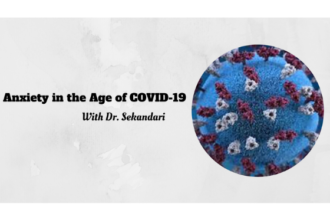Can Shopping Be An Addiction?

When women are depressed, they eat or go shopping. Men invade another country. It’s a whole different way of thinking. ~Elayne Boosler
For some going to the mall with their friends and splurging on beautiful items is thrilling. Some go as far as saying it is therapeutic or retail therapy. It feels good to buy a new item and imagine yourself wearing it for a special occasion. Shopping can be therapeutic and lift up the spirits for some individuals but for others, shopping can be more than an enjoyable outing with friends. In those cases, shopping becomes an addiction that can lead to financial ruin for the individual as well as their families.
Terrence Shulman, the founder of the Shulman Center for Compulsive Theft, Spending and Hoarding states “Everyone wants a slice of the American pie …a nice outfit, a nice car, a nice home. So people feel impatient or entitled to live the life of the rich and famous. . . . People with shaky self-esteem or self-worth are particularly vulnerable,” he says.
“Compulsive shopping and spending are defined as inappropriate, excessive, and out of control,” says Donald Black, MD, professor of psychiatry at the University of Iowa College of Medicine. “Like other addictions, it basically has to do with impulsiveness and lack of control over one’s impulses. In America, shopping is embedded in our culture; so often, the impulsiveness comes out as excessive shopping.”
“Shopoholics” are individuals whose shopping habits are out of control and excessive. If you “shop ’till you drop” and max out your credit cards, you may be a shopoholic. People with a shopping addiction believe that if they shop they will feel better. In reality, compulsive shopping and spending generally makes a person feel worse. This is similar to other addictive behaviors such as alcoholism, gambling, and overeating addictions and has some of the same characteristics.
“No one knows what causes addictive behaviors, like shopping, alcoholism, drug abuse, and gambling,” says Ruth Engs, EdD, a professor of applied health science at Indiana University. “Some of the new evidence suggests that some people, maybe 10%-15%, may have a genetic predisposition to an addictive behavior, coupled with an environment in which the particular behavior is triggered, but no one really knows why.”
Although we can’t fully identify the cause of addiction, the reasons for addiction are better understood. “Individuals will get some kind of high from an addictive behavior like shopping,” says Engs. “Meaning that endorphins and dopamine, naturally occurring opiate receptor sites in the brain, get switched on, and the person feels good, and if it feels good they are more likely to do it — it’s reinforced.”
Compulsive shopping or spending can occur when a person feels depressed, lonely and angry. Shopping and spending will not guarantee more love, raise self-esteem, heal past hurts, end regrets, reduce stress, or end the problems of daily living. It often makes these feelings worse because of the increased financial debt related to compulsive shopping.
How To Spot A Shopoholic
“There are certainly a lot of commonalities among shopoholics and other addicts,” says Engs. “For instance, while alcoholics will hide their bottles, shopoholics will hide their purchases.” There are other signs to look for:
- Overspending. “Often times a person will spend over their budget and get into deep financial trouble, spending well above their income,” says Engs. “The normal person will say, ‘Oops, I can’t afford to buy this or that.’ But not someone who has an addiction,” explains Engs Shopaholics have difficulty recognizing the boundaries of a budget.
- Overbuying: Women with shopping addiction often have racks of clothes and accessories with the price tags still attached which have never been used. They might go to a mall with the intention of buying one or two items and come home with bags and bags of items (they might go for one pair of shoes and come back with 10)
- Long Term Problem: “A shopping addiction is a continuous problem,” says Engs. “It’s more than two or three months of the year, and more than a once-a-year Christmas spree.”
- Lying and Deceit: “Shopoholics will hide their purchases because they don’t want their significant other to know they bought it because they’ll be criticized,” says Engs. “They may have secret credit card accounts, too.” They are often in denial about the problem.
- Vicious Cycle: “Some people will take their purchases back because they feel guilty,” says Engs. “That guilt can trigger another shopping spree, so it’s a vicious circle.” And in these people, debt may not be an issue because they’re consistently returning clothes out of guilt — but a problem still exists.
- Impacts Personal Relationships: “It is not uncommon for us to see impairments in relationships from excessive spending or shopping,” says Rick Zehr, vice president of addiction and behavioral services at Proctor Hospital at the Illinois Institute for Addiction Recovery. “Impairment can occur because the person spends time away from home to shop, covers up debt with deception, and emotionally and physically starts to isolate themselves from others as they become preoccupied with their behavior.”
- Need for Consequences: “It’s just like any other addiction — it has nothing to do with how much a person shops or spends, and everything to do with consequences,” says Zehr. “We often get the question around the holidays that because a person spent more money than she intended, does this make her an addict? The answer is no. However, if there is a pattern or a trend or consequences that occur with excessive shopping then the person may be a problem spender — the hallmark is still loss of control. If they are no longer in control of their shopping but their shopping is in control of them, they’ve crossed the line.”
Treatment Options for Shopping Addiction
If you or a family member is addicted to shopping, seek professional help. Encourage friends and family members to intervene. There are many 12 step programs, such as Debtors Anonymous, available locally to provide ongoing maintenance and support. It’s also important to get credit counseling and begin to reduce your debt as soon as possible. Medications have been used to treat the underlying issues of depression but results have been mixed. Treating shopping addiction with cognitive behavior therapy (CBT) along with the credit and debt counseling have been the most helpful approach. There is no quick and easy cure for shopping addiction, and treatment is necessary for solving the problem. In addition to treatment, it’s essential for the addict to change their behavior. Therapists can best help each individual determine the best treatment route, whether it’s a complete ban on shopping or having someone else control their finances. Simply admitting the problem is half the battle. The addict must identify the problem as a problem before changes can take place. Cutting credit cards and limiting access to checkbooks is a good next step. Limit access to stores either in malls or online and never shop alone. It’s also extremely important to find a more healthy and meaningful replacement for shopping.
Prevent Future Shopping Binges:
- Pay cash only for purchases
- Use a shopping list and stick to it
- Shop with a friend or spouse
- Destroy all but one credit card, meant for emergency use only
- Leave your wallet at home when going “window shopping”
- Avoid TV infomercials and shopping channels
- Take a walk or exercise when the urge to shop comes on
Youtube Video: Shopaholic
For this reason we are encouraged to control our anger.
 Dr. Nafisa Sekandari is the director and founder of Mental Health 4 Muslims.com. Dr. Sekandari is currently licensed and practicing in California and Arizona. Dr. Sekandari is also the current founder and director of MH4M Counseling and Education Center in Phoenix, Arizona. Additionally, Dr. Sekandari is a published author and lecturer.
Dr. Nafisa Sekandari is the director and founder of Mental Health 4 Muslims.com. Dr. Sekandari is currently licensed and practicing in California and Arizona. Dr. Sekandari is also the current founder and director of MH4M Counseling and Education Center in Phoenix, Arizona. Additionally, Dr. Sekandari is a published author and lecturer.
